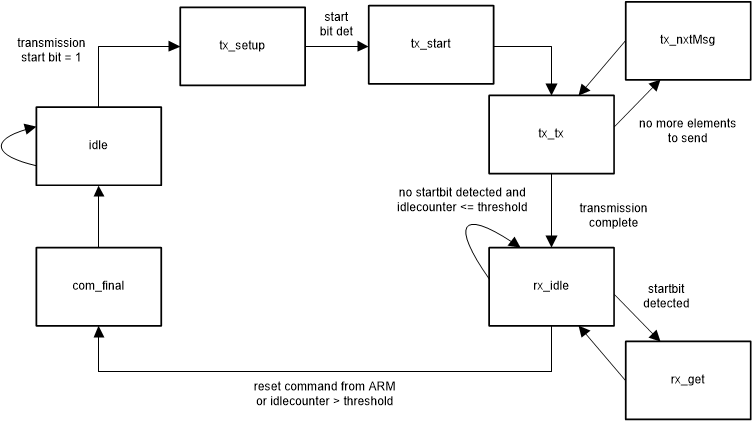TIDUEB8C July 2018 – March 2021 TPS274160
- Description
- Resources
- Features
- Applications
- 5
- 1System Description
- 2System Overview
- 3Hardware, Software, Testing Requirements, and Test Results
- 4Design Files
- 5Software Files
- 6Related Documentation
- 7About the Author
- 8Revision History
2.4.1.2 Principle of Operation
 Figure 2-13 State Machine of the Frame-Handler Simplified Overview
Figure 2-13 State Machine of the Frame-Handler Simplified OverviewFigure 2-13 shows an overview of the state machine of the frame-handler. This is by no means a complete description of the firmware but an illustration of the communication cycle.
The frame-handler is started by the “transmission start bit” which will trigger a new transmission of the selected transmit buffer. It will then transmit until the transmit buffer pointer has reached the last byte of the ongoing transmission. The end of the transmission will force a state change to the receive state which will receive data until the transmission is complete. A transmission can be completed with errors or without errors. These errors will just be reported by status bits. Error reactions and countermeasures are the responsibility of the IO-Link master stack. A completed communication cycle is indicated by bit-flags and an optional interrupt.